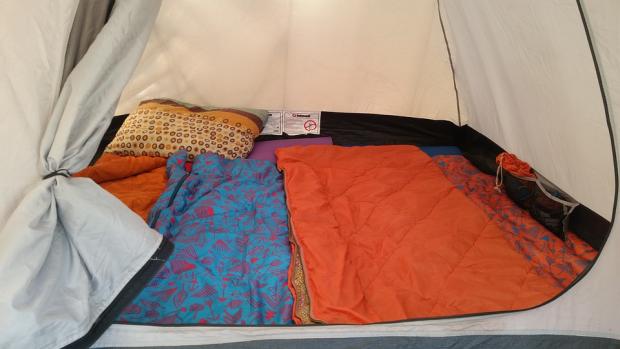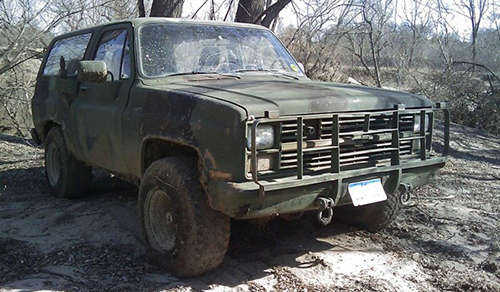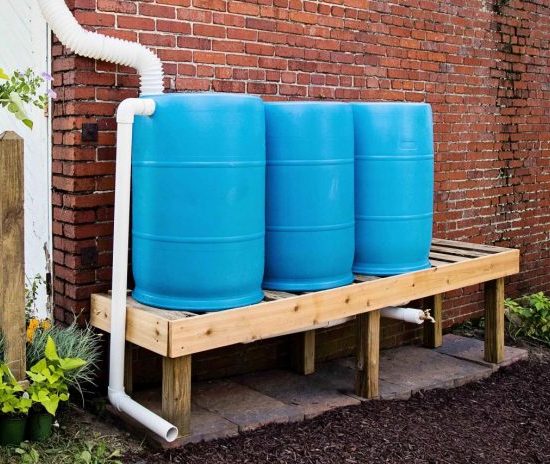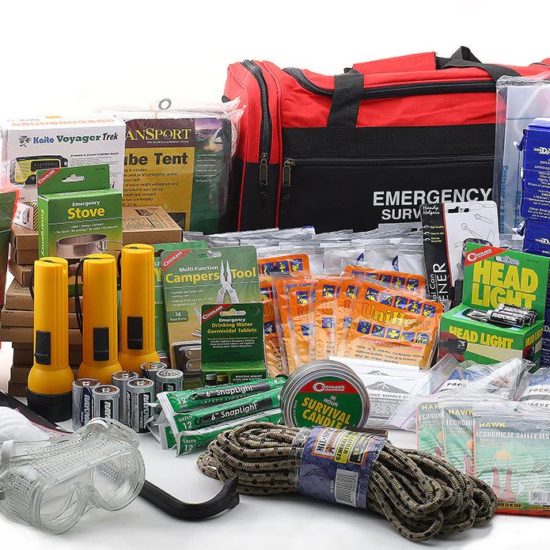
When SHTF, the first things most people will focus on is trying to find food and water. But if you’re a prepper you know that while water is critically important to your long-term survival, the ability to stay warm and to heat yourself post-SHTF can mean the difference between life and death.
Frostbite and hypothermia can set in very quickly, in less than five minutes on cold days when the wind is blowing, and even in moderate weather if you are wet.
So, one of the major things that preppers need to plan for when SHTF is how to stay warm in your home or other shelter and how to heat yourself if you are stranded outdoors unexpectedly for any length of time. In fact, knowing and planning for ways to heat yourself and stay warm is important even for short-term emergencies like a power outage.
Ways to Keep Your Body Warm
Understanding how to stay warm is critical to being able to heat yourself post-SHTF. The best ways to keep your body warm is to prevent heat loss as much as possible.
1. Conduction
Prevent the direct transfer of heat from your body by using a sleeping bag if you are outdoors or a pad of thick blankets or thick layer of dry debris between you and the cold ground. Anything you can put down between you and the ground or use to raise yourself up off the ground will help to slow your loss of body heat and will keep you warmer.
2. Convection – Cover Up
Body heat is lost when air moves over exposed skin, also called wind chill. We all know that if you are outside it’s a good idea to have gloves, a scarf, and insulated boots in the colder climates. If your mother was anything like mine, she told you to cover your head because she was convinced that you lose most of your body heat through the top of your head.
This old wives’ tale has actually been proven false in recent years. In truth, you lose the same amount of heat through the top of your head as from any other body part with a similar area of exposed skin.
But even though you don’t lose most of your body heat through your head, you can still have a body heat loss of up to 10% by leaving your head exposed. So, in addition to covering other body parts, covering your head with a hat, blanket, or scarf, can help you retain body heat and therefore stay warmer.
If you find yourself in a survival situation without layers, or if you are still cold, you can use a heat reflecting blanket such as a space blanket or even paper, newspaper, or any kind of dry debris such as grass or leaves to stop wind from getting through your clothing to your skin if you have nothing else.
3. Radiation – Layers to Trap Air
Another good way to heat yourself post-SHTF is to always wear layers of clothing. Layers help to trap the heat your body dissipates naturally.
The middle layer serves as extra insulation. It needs to be something that moist air can pass through. Fleece, down, even wool are great options for the middle layer. The outer layer is the shell and should be both breathable and waterproof.
Nalgene Bottle filled with boiling water and slipped inside an old wool sock will keep a bed warm for up to 10-12 hours. You can also heat bricks or rocks in a fire or stove and put them under your blankets near your feet and they will radiate heat.
Share Body Heat
If you have at least one other person in your survival group, you can cuddle up to share body heat. If there are more than two of you, put those most vulnerable to the cold between the others, those in the middle of a body heat sandwich are the warmest.
4. Evaporation
One of the best ways to heat yourself post-SHTF is to control the amount of heat that evaporates from your body. Evaporative loss happens when we get too sweaty.
This is why when using clothing layers, the layer closest to your skin should be something that breathes and wicks away moisture, such as merino wool or a synthetic blend. Any kind of barrier, such when mom used to put plastic bags over your sock feet, will limit the heat loss by evaporation.
Hand Warmers or Body Warmers
If you’ve planned ahead and included a few air activated hand warmers or even body warmers in your bug out bag, you can use these to help stave off the cold and heat yourself in a survival situation.
If you didn’t plan ahead, you can even make your own hand warmers by filling pockets of insulating material such as fleece or flannel with grains of rice and heating them for five minutes on the top of a wood stove.
Keep Moving
If you’ve spent any amount of time outdoors, you probably know that you feel warmer when you are moving then when you are sitting still. This is because heat is generated by muscular work. To put it simply, movement causes your body to produce heat. So another way to heat yourself post-SHTF is to keep moving as much as possible.
Ways to Heat Your Home or Space
5. Permanent and semi-permanent fixtures
Fixtures installed in advance, such as a fireplace, can be used to heat your home post-SHTF well. But if you have the option to choose, go for a something like a wood burning stove, wood-fired cookstove, or even a rocket stove heater, or a potbelly stove.
These can not only be used to heat your home more efficiently than a fireplace, but they can also be used more easily to cook food and heat hot water in a long-term SHTF situation. Get a stove that can use a variety of fuels including wood, peat, coal, and even used vegetable oil so you can use whatever is available to you.
Additional things you can do in advance of a SHTF situation include ventless gas wall heaters such as the Thermablaster or stormproof furnace units like the Empire Blue Flame which kicks on if you lose your main heat source. If your home has southern exposure, you can install a solar room with a collector and solar powered fan.
In an outdoor space, a campfire, Swedish log fire, fire pit, Kotatsu (Japanese fire table) or chimenea can provide warmth for those around it. The type of outdoor fire you use will largely depend on whether you plan ahead and whether you are on the move or have the luxury of bugging in.
6. Portable Heaters
Many people are familiar with kerosene heaters. These do not require electricity but instead use kerosene fuel to operate. The larger ones are 23,000 BTUs and will be great for larger spaces. For those with smaller spaces or who are on a budget, the smaller 10,000 BTU heaters work well and
Another option for a portable heater are the Mr. Buddy and Little Buddy propane heaters. These run using propane tanks from 1 pound to 40 pounds. The larger heater has connections for two tanks, the smaller has one connection. The reflector model screws directly to a 20-pound tank. You can find old tanks at flea markets or yard sales or even abandoned in a SHTF situation. Just one pound of propane will operate the heater for 5-6 hours on the low setting.
The portable Frontier Stove or Traveller Stove are two other ways to heat yourself. These can be used outdoors or even inside a tent or yurt with the proper fire safety precautions.
7. Lanterns
Obviously, propane lanterns, oil lamps, or kerosene Lamps are not designed to be used for heat. But they can give off a small amount of heat that can raise the temperature in their immediate area if you need to heat yourself post-SHTF in a survival type situation. Using lanterns for heat inside an enclosed space or for an extended period of time should be a last resort option and is not recommended due to safety issues.
8. Stop Drafts and Slow Heat Loss
One of the biggest ways to stay warm in your home and heat yourself is to stop drafts coming in and stop heat going out.
● Insulated Window Treatments
● Bubble Wrap on Windows
● Caulking around windows
● Use a draft blocker or towel on bottom of exterior doors.
● Add weather stripping around doors
● Install storm doors
● Use plastic window film for windows and sliding glass doors
9.Eat the Right Foods
Believe it or not, there are certain foods you can eat that will kickstart the thermogenesis process in your body. As you digest certain foods your body begins to produce energy. When the mitochondria get involved in digestion, heat is produced.
So, one of the ways to “heat yourself” is to eat root vegetables such as kale, potatoes, cabbage, and sweet potatoes, or carrots, which are more effective in raising internal heat as you digest them.
Other foods that help raise internal body temperature include peanuts, brown rice, coconut oil, and fresh ginger. Hot peppers increase circulation and can raise body temperature slightly.
Warm meals may provide immediate short-term temperature increase and possibly stop the shivers long enough for you to make a more substantial meal, but it won’t last near as long as eating raw vegetables.
Final Words
The best way to heat yourself post-SHTF of course is to plan ahead as much as possible so that you have a heat source that doesn’t require electricity and is sustainable for a longer-term period. But it never hurts to be prepared with the knowledge of some of the other methods to raise your body temperature. If you get caught without a backup heat source or if you have to bug out, the odds will be more in your favor.



















